3DPrint.com | The Voice of 3D Printing / Additive Manufacturing |
- 3D Printed Terracotta Stools Help Conserve Coastal Shoreline in Hong Kong
- Simplifyber’s 3D Printed Molds Enable Sustainable, Biodegradable Fashion
- New 3D Printing Applications: 3D Printed Medical Device Packaging
- Is the HEXWAVE 3D Printed Gun Detector Ahead of the Game?
- Latest adidas 3D Printed Shoes Feature Recycled Uppers
- White House and AM Coalition Hold Roundtables to Advance 3D Printing
- EOS Strengthens Metal 3D Printing Portfolio with Four New Powders
- 3D Printing Market Reaches $3B in Q1 2022
- 3D Printing News Briefs, July 14, 2022: Sales, Security, Medical Devices, & More
- CRP Technology and CRP USA Capabilities Reach New Heights with ITT Investment
| 3D Printed Terracotta Stools Help Conserve Coastal Shoreline in Hong Kong Posted: 15 Jul 2022 06:30 AM PDT Once again, 3D printing is being put to the test for ecological conservation efforts, this time along the coastal shore line of Kuk Po Village, Shau Tau Kok, in Hong Kong. Several of the same people who worked on restoring damaged coral reefs in Hong Kong with 3D printed clay tiles, including researchers with the Robotic Fabrication Lab in the University of Hong Kong’s Faculty of Architecture, are working on this effort, called The Tidal Stool project. As a study from the Weizmann Institute of Science explains, we’re at “a point of inflection” here on Earth where the total mass of all manmade materials actually equals the biomass of the planet itself. What’s more, that number is expected to double by the year 2040. It’s becoming ever more evident that humanity’s way of building, consuming, and just living is having a negative impact on the environment. But, as 3DPrint.com Editor in Chief Michael Molitch-Hou once asked, what if, instead of building things that always end up having a negative impact on the world, we instead designed for a positive impact, or designed for ruins?  Image courtesy of Alyssa Williams Ng Image courtesy of Alyssa Williams NgThe Tidal Stool project is one example of people trying to make a difference and turn things around here on Earth, in an attempt to reverse some of the damage we’ve caused to the flora and fauna. For many years now, Hong Kong’s coastal lines have been redefined, and not for the better. Many animal habitats, and the condition of the coast, have been messed up by large land recovery processes, but there is still hope. In addition to some other spots, Kuk Po Village has maintained its natural shoreline, and The Tidal Stool is part of a comprehensive revitalization project there, working to bring together both the natural environment and the anthropocentric (regarding humankind as the central element of existence), rather than separating them artificially. 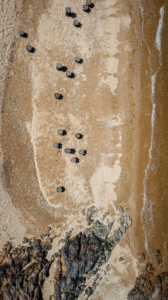 Image courtesy of Alyssa Williams Ng Image courtesy of Alyssa Williams Ng
The tidal zone is between the high and low tide, and in Hong Kong, the zone oscillates by roughly 900 mm. If you didn’t already know, every twelve hours, the ecology of the shoreline changes when the tides do. Plants and animals living in this zone are exposed to the air at low tide and submerged by the water at high tide, so they have varying conditions to deal with during their day to day lives. The Tidal Stool project was coordinated by Weijen Wang and HKU’s Robotic Fabrication Lab leader Christian J. Lange, also the founder of Rocker-Lange Architects. The team also included Chen Zhaowei, Yin Fangyi and Chan Ching Yin, and was funded by the Country Conservation Office. Using the technology in the Robotic Fabrication Lab, the team 3D printed 30 unique stools, with various degrees of surface complexity, as you can see below, and with different heights for different users, both human and animal, and even plants. 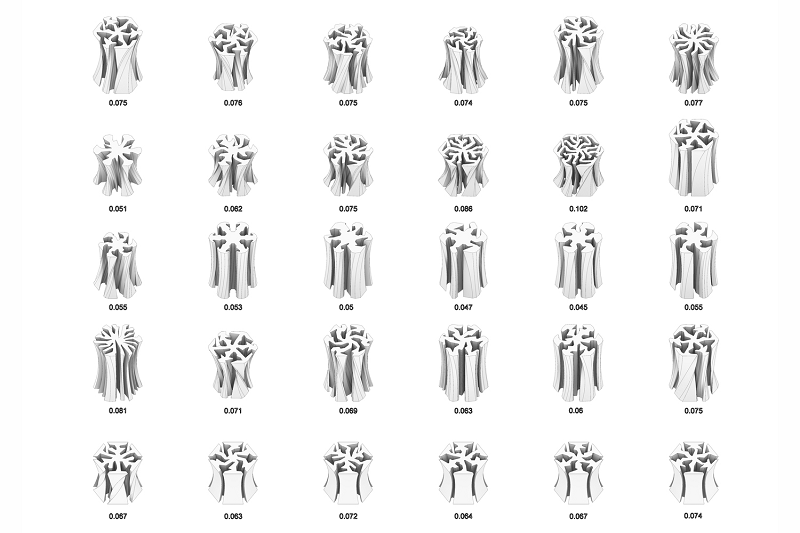 Digital Prototypes with complexity indicator. Image courtesy of Robotic Fabrication Lab, HKU Digital Prototypes with complexity indicator. Image courtesy of Robotic Fabrication Lab, HKUThe functional design approach for these 3D printed stools is, as explained previously, to benefit and connect both the natural and anthropocentric environments. The intricate cracks and spaces in the stools offer tidal zone creatures hideouts that are just their size, so they can keep away from predators. Additionally, the 3D printed tidal stools improve the shoreline’s ecology: they are partially submerged in the water during high tide, giving flora and fauna a safe place to rest, and at low tide, they are above the water and offer visitors a nice spot to sit down and enjoy the scenery. Obviously, people are enjoying the stools, and Lange reported that crabs have been witnessed in the crevices as well.  Image courtesy of Christian J. Lange Image courtesy of Christian J. LangeThe reason so many different designs were printed was so the team could determine which geometry would perform the best in the coastal environment. The stools were 3D printed using a standard industrial robotic system, out of a terracotta clay mix. This material works well for this application due to its pH level—if any of the stools begin to deteriorate, they won’t damage the environment when they return to nature. This brings us back to the concept of designing for ruin. 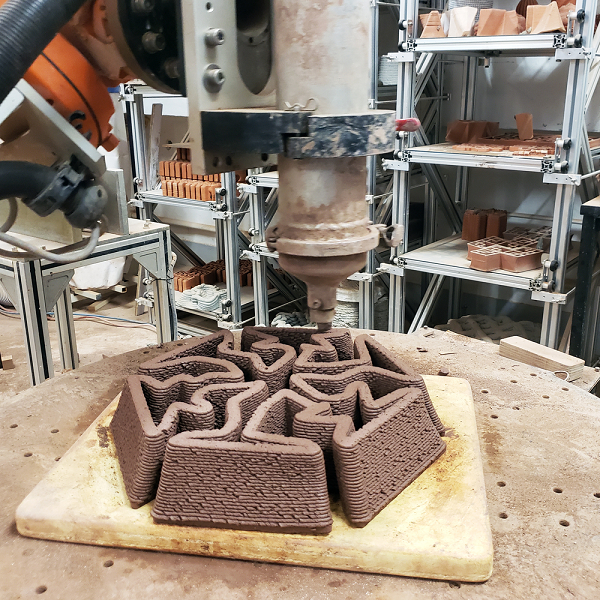 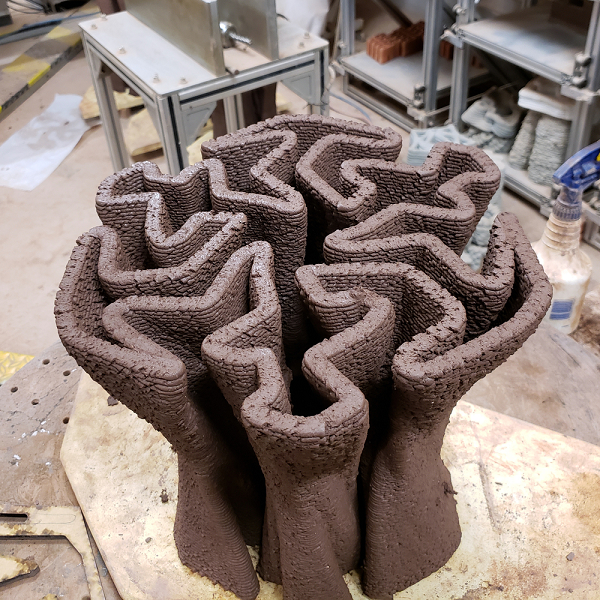 When designing the stool, the team was inspired by three main ideas, the first being a reference to the classical ceramic stools that existed for at least 1,000 years in China. Made of a variety of materials, including porcelain, wood, stone, and glazed stoneware, these stools were mostly used in landscape gardens. The second inspiration is mangrove roots; these trees grow in coastal swamps that flood at high tide, and featured tangled, aboveground roots. Mangroves grow along the shoreline in this part of Hong Kong, and support its marine and coastal ecosystems. Finally, the team was inspired by the rocks on this particular shoreline, which is reflected in the dark brown color of the 3D printed stools and allows them to fit in with the surrounding habitat.  Image courtesy of Christian J. Lange Image courtesy of Christian J. LangeThe post 3D Printed Terracotta Stools Help Conserve Coastal Shoreline in Hong Kong appeared first on 3DPrint.com | The Voice of 3D Printing / Additive Manufacturing. |
| Simplifyber’s 3D Printed Molds Enable Sustainable, Biodegradable Fashion Posted: 15 Jul 2022 06:00 AM PDT While fashion can be really fun, it’s also a very wasteful industry. As Kornit Digital CEO Ronen Samuel said at the company’s Fashion Week in Tel Aviv this year, 28 trillion liters of water are used to produce shirts, and 40% of all produced clothes end up in a landfill. That’s why many are turning to digital technology, like 3D printing, to keep things more sustainable. A startup called Simplifyber is jumping on this train by completely rethinking how we make shoes and clothing today. Rather than cutting, knitting, weaving, or sewing, some of which can waste fabric, Simplifyber has developed a novel 3D printed approach to traditional clothing manufacturing that supposedly cuts out 60% of the steps and creates a biodegradable product, all while reducing waste.
With 3D printing, exactly the amount of material needed to make the product is used, so there’s less waste. Scientists at Simplifyber came up with the process, which entails pouring liquid cellulose into a single 3D printed mold. No stitching is required, as the piece pops right out of the mold, and dye can be added while the material is still in a liquid form, which saves water. Once the shirt or shoe is no longer wearable, it can then be recycled into new clothing.
The material for the 3D printed molds is made in a lab, from a mix of biodegradable, non-toxic additives, wood pulp, and other plants. The process is not too different from making paper, but results in a stronger, more durable material. Additionally, the completed pieces can have characteristics of actual fabric, such as leather, just by changing up the mixture’s thickness and composition, and molding the shape makes it possible to create textures on the material as it’s made.
The startup recently announced that it had closed a $3.5 million seed funding round, led by At One Ventures; other participants include Techstars, Heritage Group Ventures, The Helm, W Fund, Jetstream Ventures, Plug & Play Ventures, REFASHIOND Ventures, CapitalX Ventures, and Keeler Investments Group. Additionally, it’s partnering with HP for a pilot to 3D print molded shoe uppers, also from a custom, natural fiber-based formula. 3D printing enables what Intscher-Owrang calls “extreme customization,” due to the technology’s ability to create bespoke pieces, as well as adjacent technologies like 3D body scanning. With the help of the funding round, this is where Simplifyber will begin.
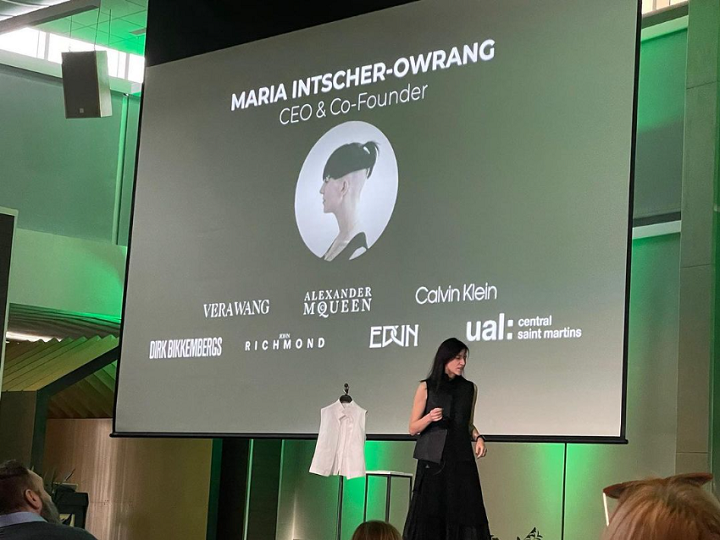 Simplifyber was presented at The Heritage Group on Techstars Demo Day. Image courtesy of Simplifyber/Instagram Simplifyber was presented at The Heritage Group on Techstars Demo Day. Image courtesy of Simplifyber/InstagramEventually, the startup wants to replace knits and wovens, which represent a $25B market, and focus on mass manufacturing, which may end up being more affordable for consumers in the long run.
At the moment, while sustainable materials are better for the environment, they also cost more money, and so are less accessible to the general public. But Simplifyber hopes, in the future, to replace manufacturing at the market’s lower end by fabricating T-shirts and other items for day-to-day wear. Its business structure and 3D printed molds, at scale, could potentially be used to produce as much clothing in a single day as traditional factories can in a month.
Simplifyber believes that one day, its technology could even replace up to a third of total manufacturing. But, you have to walk before you can run, and the startup’s first 3D printed product, most likely a sneaker, could hit the market as soon as next year. The post Simplifyber’s 3D Printed Molds Enable Sustainable, Biodegradable Fashion appeared first on 3DPrint.com | The Voice of 3D Printing / Additive Manufacturing. |
| New 3D Printing Applications: 3D Printed Medical Device Packaging Posted: 15 Jul 2022 05:30 AM PDT We all know that 3D printed orthopedic implants are a 3D printing success story. For instance, we know that 3D printed acetabular hip implants provide patients with better bone adhesion than those made with conventional means. Other 3D printed devices can more closely match the modulus of bone or change the property of the implant in new ways. We may yet see a further dramatic expansion in personalized devices, as well. However, even without an increase in patient-specific products, there are already many FDA 510(k) clearances for 3D printed medical devices, orthopedic implants, and more. At the same time, we’re seeing an expansion from 3D printed hip and knee devices into a burgeoning market for spinal fusion cages and other products for extremities. Just some of the advantages of additively manufacturing these items include: the need for fewer steps, more precise designs, improved porosity and pore sizes, better buy-to-fly ratios, and unique shapes. I think that we are all in agreement that this is truly a golden age for 3D printed metal implants. The Market for PackagingHowever, there is an overlooked opportunity that is growing in combination with 3D printed implants. Medical packaging for medical devices, implants, and instrumentation is a burgeoning market. This packaging has to be sterile, while also keeping the content sterile through transport and use. From the point of manufacture to sterilization, transport, and actual use in the operating room, this chain of safety cannot be broken. Imagine an instrument that is difficult to extract from its packaging and can, therefore, become contaminated while close to implantation. Or picture a courier dropping a package and the barrier film breaking. If personalized implants grow, then another layer of complexity will be added with every package having slightly different dimensions. Under PressureAt the same time there is pressure on surgeons, hospitals, and manufacturers to go to market faster with better products with quicker turnaround times. This pressure comes from the fact that there is a lot of innovation taking place, with devices really improving outcomes for patients. Then, there are the waiting lists accumulating across many health systems. This has been further exacerbated by the short-term impact of COVID, which delayed many surgical procedures for months. Compared to years ago, devices are also much more complex and there is much greater variance in them. Cumulatively, we’re seeing a recipe for disaster in implants, with significant time and revenue pressure colliding with greater product complexity. Riding a tricycle is difficult enough but doing so on a new tricycle when under stress will increase accidents. 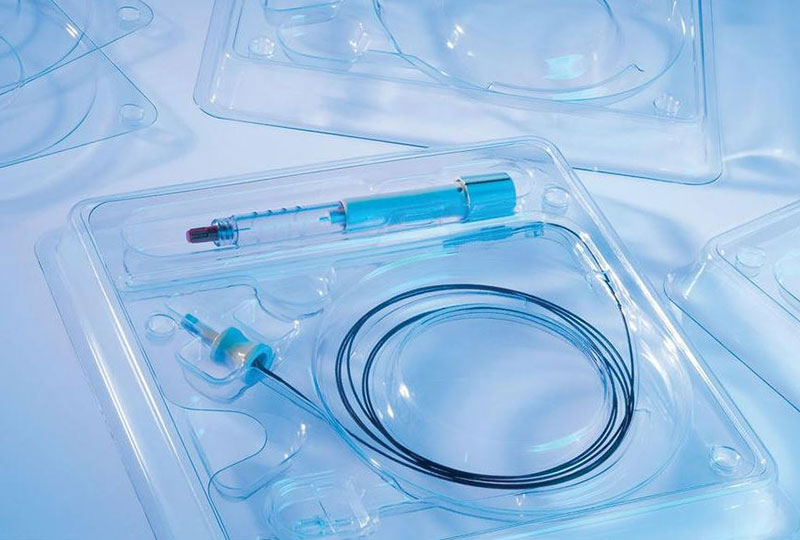 Medical device packaging tooling, image by CCIT. The Increased Specificity of Surgical DevicesThe integrity and sterility of the device itself and its packaging is not the only worry. Now, many products can feature specially made coatings that may need their own care. There are myriad tools that accompany implants, as well, in addition to specific fasteners, screws, and bits that have to be sterile. What’s more, these fasteners may be specific to a given location and step in the body. In many cases, a particular order of using these components has become increasingly become more important. Traditionally, big sterilization caddies or trays are used to colocate all of these tools and devices. We’re seeing a limit to these, but also a trend towards packaging each item individually, which then results in increased costs for implants. Amid this profusion of SKU, variance, and packaging, there is a constant need for traceability. To make matters more complex, we’re seeing a profusion in the number of sterilization processes: gamma sterilization, electron beam sterilization, X-ray sterilization, vaporized peracetic acid sterilization, NO2 sterilization and—this truly sounds like a bad idea—ethylene oxide sterilization. They have their relative merits and can all react differently to different packaging, coatings, and devices. The approval and manufacturing for different materials, coatings, implants, and sterilization processes may also be quite complex. 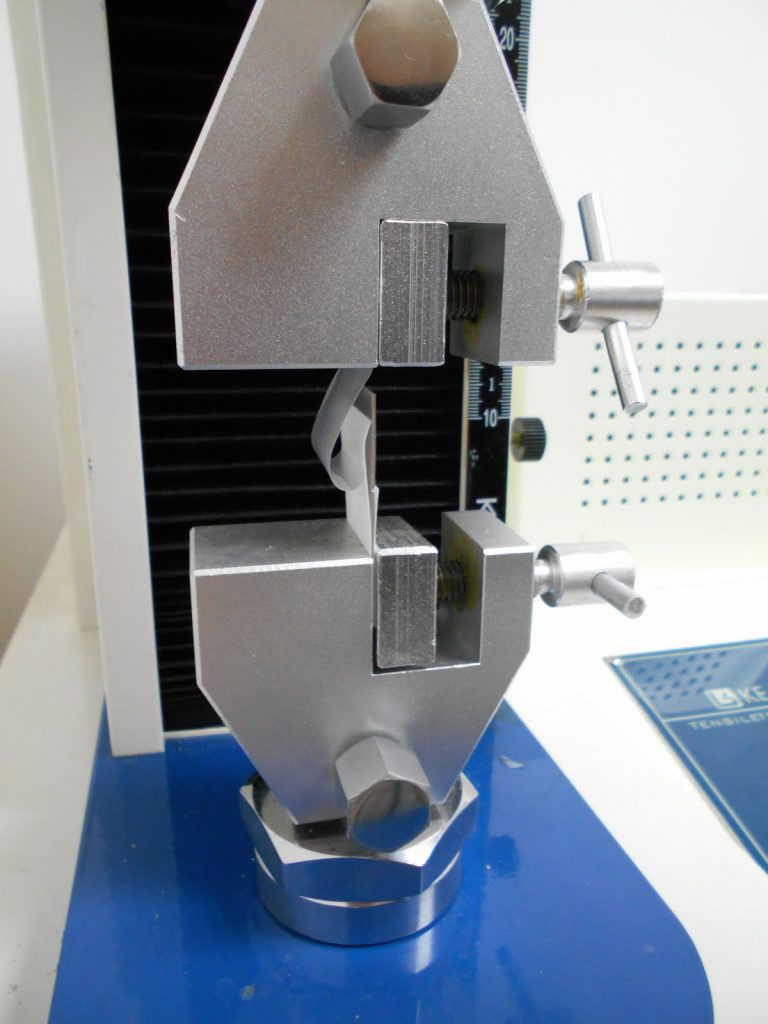 Package sterility testing, Image QES. There are generally a number of issues with trays coming to the fore, as well. These include trays undergoing steam sterilization without being manufactured for it; creep in the barrier surface; sterilization thresholds not met; sterilization issues with tool handles, and more. Regulators seem as though they may not be comfortable with custom trays. I can’t tell whether this is a temporary caution or if it would impede the use of 3D printing widely to produce trays and other methods for protecting and packaging medical implants. The Benefits of 3D Printed Medical Packaging and TraysWhat we can see from the sum total of these developments is that the market for instrument trays and packaging for implants—as as well as individual items like screws—are ripe for disruption. Now, especially in implantology, “measure 10 times cut once” is a good adage. This is not a “move fast and break things” kind of game. So, any progress will be determined and careful (thank goodness for that, by the way!). But, this set of challenges for medical device and implant packages would lend itself well to a 3D printable solution. 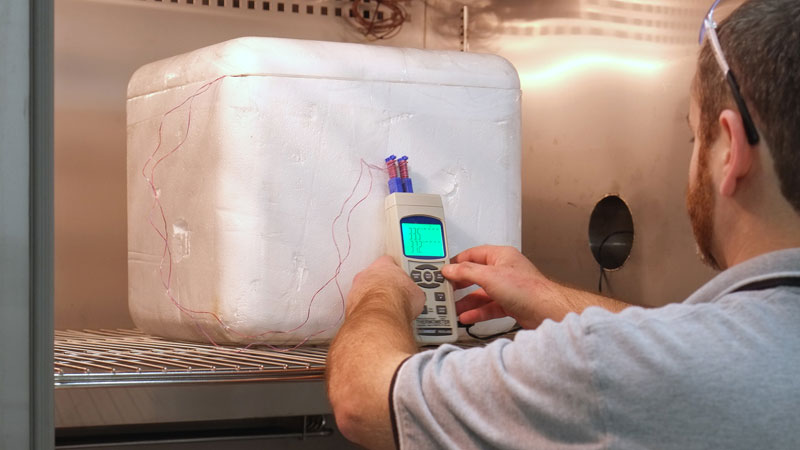 Packaging validation by Advanced Packaging Technology Laboratories. Time to MarketTo mitigate time to market, 3D printed mold tooling could save time for market participants. Vacuum forming and thermoform tooling could be made much faster with 3D printing. Reactive injection molding and other short-run molding techniques can make tools and parts available more quickly, as well. Additionally, mold cycle times can be cut via optimized, 3D printed mold tooling. 3D printing metal molds can also make tooling available faster in some cases. Rejuvenating mold tools with 3D printing can make molds available more quickly. Greater Specificity for TraysThermo- and vacuum-formed mold trays could be made more specific by 3D printing may different mold tools and inserts for them. With the proviso that we’d have to test every instance, it would be possible to produce trays for every operation scenario, with parts ordered for the proper procedure. Tighter, better fitting inserts would keep tools and implants from knocking about. A form fitting exterior case could then be made from impact resistant material to offer more protection to trays and the instruments inside. Molds for soft protective materials (e.g., EVA, foams) might further protect trays and instruments. Packaging and LabelingAdditive could be used to produce tooling for particular formfitting cardboard tools to protect instruments and devices in transit. Tools for die casting and stamping QR codes, identifying marks, and tracking codes on all manner of labelling and packaging might also be 3D printed. Bridge ManufacturingIn the case that a manufacturer is switching materials or processes, 3D printing could be used as a bridge technology to produce the necessary packaging. The same is true for when new sterilization techniques are being developed or a product is recalled. Other Tooling ApplicationsWith more SKUs, more variation, more materials, and more complexity, testing will also become more complex. 3D printing could be leveraged to produce jigs, fixtures, and tools to test packaging. Quality assurance and inspection will also become more complex. 3D printing could additionally be used to produce better tools and rigs for properly inspecting the more highly variable packages and tools that will become available. The post New 3D Printing Applications: 3D Printed Medical Device Packaging appeared first on 3DPrint.com | The Voice of 3D Printing / Additive Manufacturing. |
| Is the HEXWAVE 3D Printed Gun Detector Ahead of the Game? Posted: 15 Jul 2022 05:00 AM PDT With dozens of specialized weapons detection manufacturers worldwide, the sector seems well-covered. However, in the last few years, the potential threat of new kinds of weapons made out of non-metallic materials has raised serious concerns; among them, 3D printed guns. Falling under the "ghost gun" category, 3D printed guns are not serialized or traceable, and can be made almost entirely with a printer at home. In the U.S., the First Amendment protects anyone who plans to 3D print a gun, and the files to create them are guarded as free speech. However, the the home manufacturing of these weapons has become an increasing concern among law enforcement. Anticipating a potential danger, security technology newcomer Liberty Defense is ready to beta test a new non-metal weapons detection system in airports and other commercial checkpoint applications. To understand more about this new system, 3DPrint.com talked to Liberty Defense CEO Bill Frain, who explained how new technologies could bring security teams into a reality in which untraceable and even non-metal weapons exist. RF DetectionThere are plenty of metal detector companies in the security market, but that is not what Liberty Defense is. After launching in 2018, the company developed proprietary technology that can detect a broader spectrum of threats or anomalies, rather than metal alone. Its solution, called HEXWAVE, can provide walkthrough, touchless detection of both metal and non-metal weapons. For that to happen, it uses low-power radio frequency to create 3D images of items that are not visible on a person. These images are then assessed by artificial intelligence (AI) to identify weapons and other threats. The company has an exclusive license from the Massachusetts Institute of Technology (MIT) and a technology transfer agreement for patents related to active 3D imaging technology From a technology perspective, the system is very similar to the body scanners currently used at airports, says Frain, but with a twist. The system works by scanning people as they walk through the device’s panels in a socially distanced manner, without the need for passers-through to stop, remove coats or even empty their pockets.
This is a big differentiator for Liberty Defense, since an item's composition is not going to stop HEXWAVE from deciphering whether it is a threat or not claims the CEO. But don't expect to see a HEXWAVE at a supermarket, airport, or school, since the placement timeline might take a while. The product is currently in beta, which means the hardware configuration is done, and Frain says the team is "training" the software algorithms to look for various threats. As part of its beta phase, HEXWAVE will be tested at a few locations: Canada’s largest airport, Toronto Pearson International Airport; the Oriole Park at Camden Yards in Baltimore, Maryland; the University of Wisconsin-Madison; a major Hindu temple outside of Atlanta, Georgia; and Port Tampa Bay in Florida, among others. 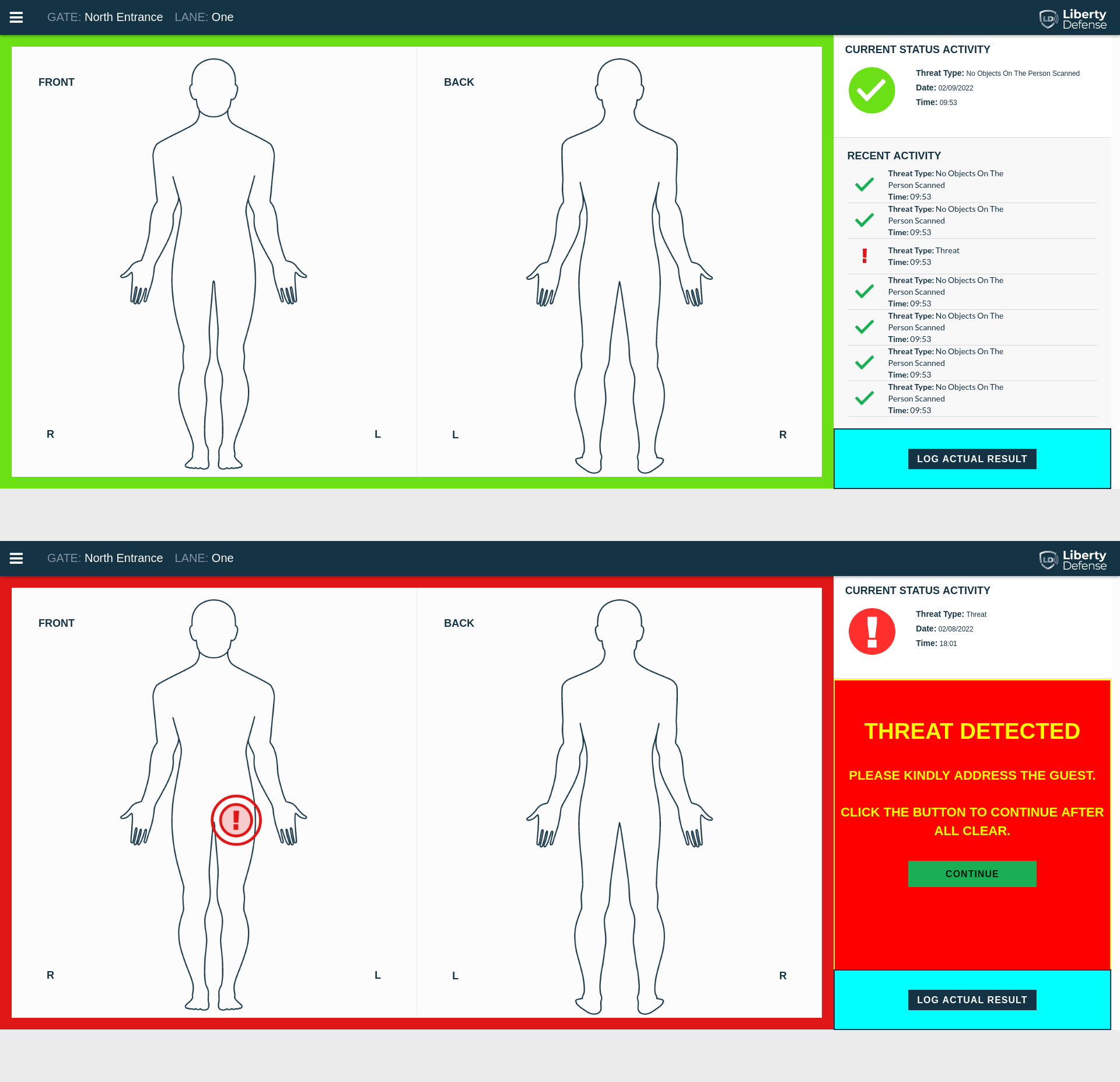 Active threat monitoring combined display for Hexwave non-metal gun detector. Image courtesy of Liberty Defense. What’s more, the company has secured a contract with the Department of Homeland Security's Transportation Security Administration (TSA), thanks to a competitive tender for aviation worker screening won by Liberty Defense in September 2021. Frain says the contract with TSA will be to screen aviation workers going into airports that have airside access.
Frain said that Homeland Security had invested early on in developing this technology, so they have a vested interest in seeing its capabilities from a detection standpoint. Additionally, in 2022, the U.S. Federal Communications Commission (FCC) approved the use of radar-based imaging for the detection of weapons and other objects hidden on a scanned person. The recent order issued by the FCC approves the system for operation and represents a major step toward final certification and commercialization of the technology. A Recent History of 3D Printed Gun UpheavalAfter open-source firm Defense Distributed designed the first gun and released the files online in 2013, 3D printed weapons may have seemed like a relatively small safety threat. However, it is now raising concerns for many governments and security agencies. In response to what they consider a growing threat, earlier this year, the European Police Office (Europol) organized the first 3D-printed firearms conference in the Hague. At the same time, the Biden administration called for an assault weapons ban and other measures to curb gun violence. Undoubtedly, 3D printed guns or individual parts that some individuals create at home with their own printers have increased concerns that homemade weapons could live up to their prematurely violent reputation. Several attacks in 2022 in U.S. communities have driven a lot of attention to homemade firearms in general, and 3D-printed guns, in particular, are coming under scrutiny. Last year, there were approximately 20,000 suspected ghost guns reportedly recovered by law enforcement in criminal investigations, a tenfold increase from 2016, according to Liberty Defense. Our research revealed that over 90 people had been arrested for 3D printed guns worldwide in the last three years. Even though the number is small compared to other criminal arrests – such as for drug possession which remains steady at more than a million per year in the U.S. alone – what worries agencies and experts is the increase of 3D printed guns found during criminal investigations. According to our data, 42% of all 3D printed gun-related arrests were in 2022, while we estimate that roughly 31% of all arrests occurred in 2021, and 12% in 2020.
The HEXWAVE will not only act as a deterrent for anyone that wants to carry 3D-printed guns with the intent to harm but also other threats. For example, Frain described that someone with intent to harm could carry improvised explosive devices, like pipe bombs, made out of the standard plastic C-4, powders, liquids, and other potentially dangerous items. Given the recent assassination of former Prime Minister of Japan, Shinzo Abe, with a homemade weapon, it wouldn’t be surprising if technology like HEXWAVE began to increase in use. Though the firearm was not 3D printed, the suspect was found to have two other DIY guns at home, along with some explosives.
The post Is the HEXWAVE 3D Printed Gun Detector Ahead of the Game? appeared first on 3DPrint.com | The Voice of 3D Printing / Additive Manufacturing. |
| Latest adidas 3D Printed Shoes Feature Recycled Uppers Posted: 14 Jul 2022 07:00 AM PDT adidas has had more success with additive manufacturing (AM) thus far than possibly any other major consumer brand, using the technology to print over a million midsoles so far. Following the 4D Futurecraft and AlphaEDGE 4D lines, the latest line — the 4DFWD — is expected to be adidas' largest AM-driven production run yet. Additionally, the athletic apparel and footwear giant continues to get more innovative with each iteration of the 4D. The Ultra 4DFWD, just released in June, has an upper made from adidas' proprietary Primeknit material, composed of 50% Parley Ocean Plastic, and 50% recycled polyester. This combines adidas's success at its AM endeavors, along with its other forward-thinking project from the past few years, recyclables. One of the company's first well-publicized uses of AM, in fact, was to produce a concept shoe, released in 2015, with an upper made from a combination of recycled ocean plastic and recycled polyester. The next year, adidas came out with a limited run (about 7,000 pairs) of the shoe, called the UltraBOOST Uncaged Parley. However, the version of the shoe that was actually sold wasn't produced using AM. 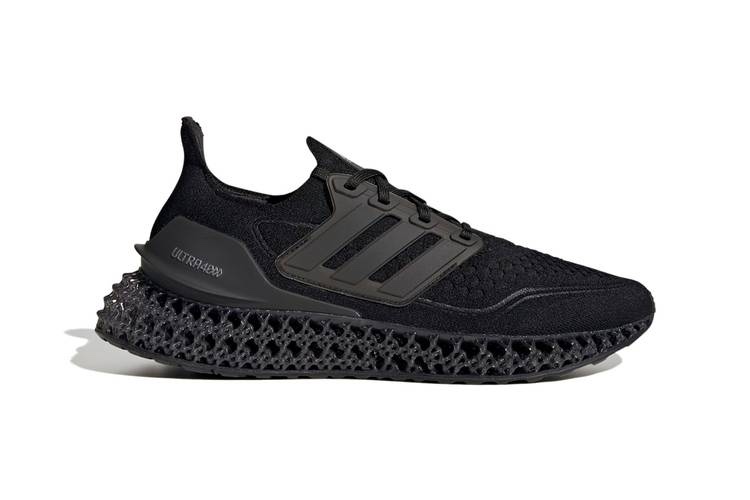 Thus, adidas provides an excellent example of the gradual nature of the trajectory towards success, when it comes to a large company's ability to incorporate AM — as well as other newer technologies — into its routine production processes. A gradual approach would seem especially crucial for companies in consumer sectors, and most of all, any sector where personal tastes are of the utmost consideration. For instance, aside from the fact that the midsole adidas makes with AM has a shape that can be ideally produced by AM, this general shape happens to be "in", in terms of consumer preferences. This is not something adidas could've known when it started using AM, but now that the company is capable of using the technology for higher production volumes, it's in a position to potentially start significantly increasing the number of products that it prints. 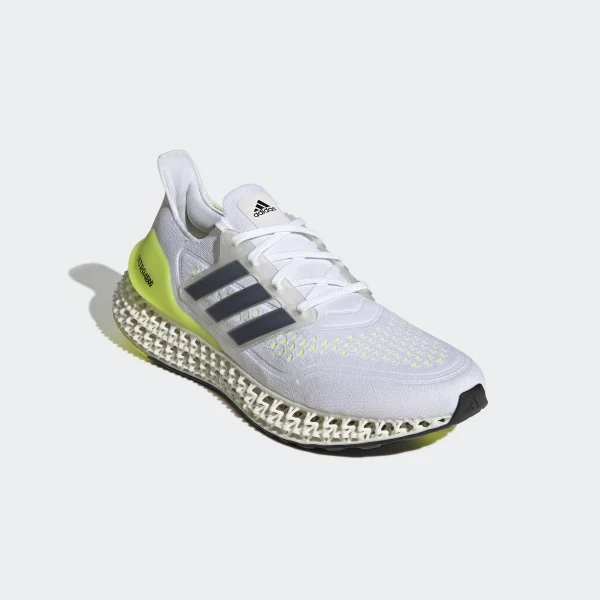 That helps shed some light on the perennial question of when AM will be used to accelerate mass customization. That this will eventually happen seems more realistic than it ever has. But again, it's going to continue be a gradual process for the foreseeable future, and it's going to have to come, first, from large companies that have already been dipping their toes in the AM waters for years prior. Put simply, a company's AM infrastructure likely has to have stood the test of time and proven its worth, before mass customization of any kind can even be considered. On the other hand, once we do start to see the first notable cases of AM-driven mass customization, I think we'll start to see a whole lot more of it very quickly. Images courtesy of adidas The post Latest adidas 3D Printed Shoes Feature Recycled Uppers appeared first on 3DPrint.com | The Voice of 3D Printing / Additive Manufacturing. |
| White House and AM Coalition Hold Roundtables to Advance 3D Printing Posted: 14 Jul 2022 06:30 AM PDT The Additive Manufacturing Coalition has begun hosting members only roundtables with members of the White House. The goal of the discussions, two of which have occurred so far, is to establish a dialogue between the AM community and those making important policy decisions at the federal level. The first roundtable occurred on April 22, 2022, where members of the trade association were able to hear from and share thoughts with Liz Reynolds, Special Assistant to the President for Manufacturing and Economic Development with the White House National Economic Council. There, Reynolds discussed the administration's policy approaches to AM, including its focus on the adoption of 3D printing by small- and medium-sized enterprises (SMEs) within the federal supply chain. This strategy was later cemented in the AM Forward program announced by President Joe Biden in May. Members of the coalition applauded the goals stated by Reynolds, but also noted that there were already businesses using AM that were attempting to integrate themselves into the federal supply chain. However, they were having trouble engaging with the federal government. Fortunately, Reynolds followed up with a second roundtable on July 12, where AM Coalition members were able to discuss those challenges in more detail. This time around, members raised issues associated with the current federal procurement process. This included basic issues, such as how to interface with the proper entities as the Department of Defense (DoD) and other agencies, as well as more complex topics. For instance, intellectual property protections were brought up, as were challenges with software development. Members also addressed the limitations on service and training contracts, which inhibit the ability of government agencies to take full advantage of the capabilities of the printers they purchase and limit the effectiveness of the maintenance. Altogether, the conversation raised awareness on the part of the current administration about obstacles faced by AM industry stakeholders. In particular, it made it clear that the federal government may need to revisit its standard original equipment manufacturer-subcontractor method for procurement. Traditionally, the federal government, especially the DoD, allows its large, prime contractors, such as defense companies, to manage subcontractors. This makes it difficult for SMEs to navigate the federal agencies and enter the procurement stream. For instance, an AM company that make products for end users doesn't have the same access points as a military subcontractor that manufactures components for a subassembly on a massive government project, like a fighter jet. Therefore, 3D printing SMEs may have a hard time working with the federal government unless it is through one of these prime contractors and as one single entity collaborating on a large project. These roundtables were just the beginning for the AM Coalition. In addition to hosting further members-only events, as well as public webinars, the group is in the process of compiling the comments made during the call with Reynolds and will forward a more detailed explanation of the issues raised to the Biden administration. The post White House and AM Coalition Hold Roundtables to Advance 3D Printing appeared first on 3DPrint.com | The Voice of 3D Printing / Additive Manufacturing. |
| EOS Strengthens Metal 3D Printing Portfolio with Four New Powders Posted: 14 Jul 2022 05:55 AM PDT Industrial 3D printing company EOS recently began a partnership with Sauber Technologies for its polymer 3D printing, but is definitely working to continue improving its metal 3D printing capabilities as well. Today, the company announced that its metal 3D printing materials portfolio for the M 290 printer has grown with the addition of four new materials. The mid-sized, powerful DMLS system already has quite an extensive materials portfolio, and the addition of these new stainless steel, tool steel, and nickel alloy materials will just make it stronger. EOS has what it calls the Quality Triangle, which is a unique approach in our industry. The company takes the data from each of the three main technical elements of the AM production process—the system, the material, and the process—and assigns each combination a Technology Readiness Level (TRL). This designation makes the estimated production capability and performance of the solutions more transparent, so customers know just what they’re getting. Premium products (TRL 7-9) have a proven capability, highly validated process data, and reproducible part properties. TRL 3 and 5 are called core products, which means that they are less mature and with less data, but give customers early access to technology that’s still under development. These four new materials have all received a TRL 3 Core classification. 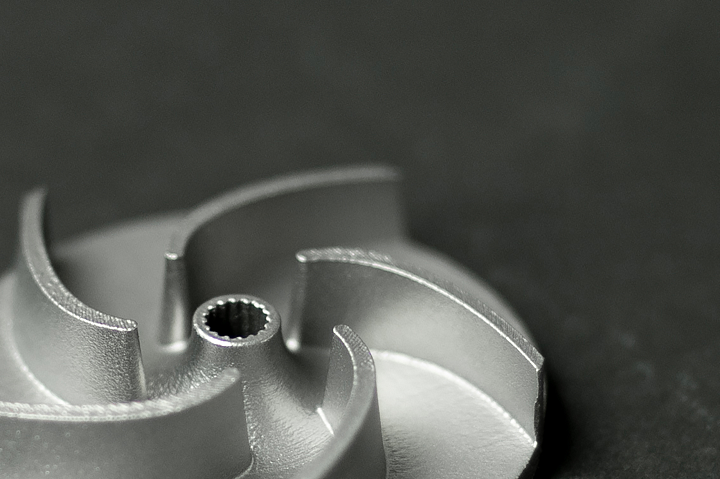 Impeller, 3D printed with austenitic EOS StainlessSteel 254 material, with excellent corrosion resistance The first of these new materials is EOS StainlessSteel 254, well-suited for applications in extreme conditions, such as chemical handling equipment, pulp and paper manufacturing devices, and chlorinated seawater handling equipment. The austenitic stainless steel features high resistance to pitting, uniform, and crevice corrosion, and comes with a 40/60 µm process for the EOS M 290 printer. This material’s excellent corrosion resistance comes from its high chromium, molybdenum and nitrogen alloying, and EOS says it also features great stress corrosion cracking, as well as higher strength than conventional austenitic steel. The other stainless steel material is EOS StainlessSteel SuperDuplex, for difficult environments. Optimized for AM, the austenitic-ferritic duplex stainless steel maintains “super duplex properties,” and also features high chromium, molybdenum and nitrogen alloying for great corrosion resistance. Just like EOS’s other new stainless steel, StainlessSteel SuperDuplex shows great pitting, uniform, and crevice corrosion resistance. The company says this material also enables high strength, and that it’s great for applications in mining and offshore equipment, the oil and gas industry, and for pulp and paper manufacturing devices. It comes with a 40/80 µm process for the M 290, and due to what EOS calls the “optimization of phase balance,” this material can often be used in as-manufactured condition.
The new cobalt-free, ultra-high strength EOS ToolSteel CM55 is meant for use at elevated temperatures in tooling and engineering solutions. This high hardness steel has a 40/80 µm process for the EOS M 290 printer, and the combination of its moderate carbon content and alloying elements have formed a stable, strong structure for more demanding applications, such as powertrain components, cold and hot working tools, and parts for mechanical engineering. Finally, the last new material, EOS NickelAlloy HAYNES 282, is also meant for 3D printing parts for applications at elevated temperatures. Manufactured under license from Haynes International Inc., this precipitation strengthened, nickel-based superalloy powder was developed specifically for high-temperature structural applications, such as energy industry components, turbomachinery and gas turbine parts, and aerospace and rocket engine components. It features what EOS calls a “unique combination” of thermal stability, excellent weldability, good oxidation and corrosion resistance, and high temperature strength. The post EOS Strengthens Metal 3D Printing Portfolio with Four New Powders appeared first on 3DPrint.com | The Voice of 3D Printing / Additive Manufacturing. |
| 3D Printing Market Reaches $3B in Q1 2022 Posted: 14 Jul 2022 05:30 AM PDT SmarTech Analysis has released its latest quarterly data for the additive manufacturing (AM) industry, indicating a very strong start to the year for the sector. According to the AM market research group, the 3D printing market grew to $3 billion in Q1 2022, which represents 27 percent growth compared to the same period in 2021. If the sector is able to whether the negative effects of inflation and global supply chain disruptions, SmarTech suggests that the printers, materials, and service markets could generate $12 billion by the end of the year. That compares to $10.6 billion for 2021. That caveat, however, is a critical one. Latest insight reports associated with the SmarTech data indicate that there are macroeconomic challenges on the horizon that could slow the quick growth already observed for the year. 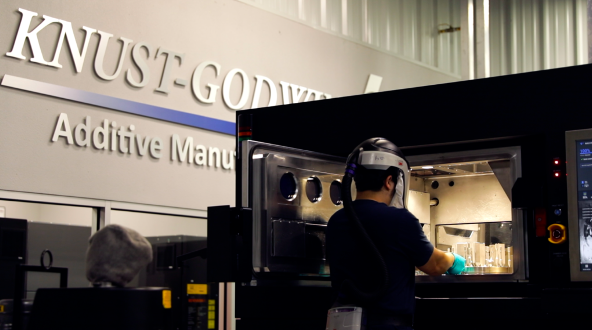 Contract manufacturer Knust-Goodwin purchased additional metal 3D printers from VELO3D. Image courtesy of VELO3D. The new information is integrated into SmarTech's "Core Metals" and "Core Polymers" market data products, which include historical quarterly data and provide 10-year forward forecasts. Quarterly reports on the metal and polymer AM markets can be accessed as a one-time or subscription and are customizable as needed.
According to SmarTech, the professional AM markets for printers, materials, and services is 40 percent larger than it was in Q1 of 2020. As discussed in previous articles, this was driven in large part by the benefits of the technology when faced with supply chain disruptions caused by COVID response. The market research company believes that the industry isn't developing in the same way as in the past, meaning that this increase in revenues isn't like past cycles. SmarTech notes that, while "the value proposition for the technologies is largely unchanged, "yet the appetite in the market appears to have grown significantly." This growth isn't being pushed by what has previously been the "typical cycle" of new technologies, in which hardware revenues increase as people explore these developmental machines. Rather, SmarTech suggests that hardware sales are increasing alongside hardware utilization. Additionally, the report argues that not only is the AM industry different this time around, but so are market conditions. In the past, when there have been incentives for AM adoption, these were blocked by obstacles to growth. Now, however, issues such as supply chain disruptions, sustainability, and cost reductions favor the use of 3D printing. This is combined with the fact that AM itself has advanced. 3D printers are more productive and stable. Manufacturing execution software for AM has improved. There are more and better design tools for 3D printing. The standards for the industry have also increased to a degree. With this in mind, there are now more customers who have the necessary tools to actually implement AM effectively. In other words, all of the pieces are there to drive further growth for the AM sector. The biggest variable is whether the world around it will allow for that expansion. Inflation has reached all-time highs and the stability of the oil and gas market is precarious, not to mention its impact on the surrounding ecosystem. If the global economy can maintain some semblance of stability—possibly even if it can't—AM may continue to develop apace. For more information on stand-alone reports or ongoing subscription services for the additive market, go to the SmarTech website. The post 3D Printing Market Reaches $3B in Q1 2022 appeared first on 3DPrint.com | The Voice of 3D Printing / Additive Manufacturing. |
| 3D Printing News Briefs, July 14, 2022: Sales, Security, Medical Devices, & More Posted: 14 Jul 2022 05:00 AM PDT In today’s 3D Printing News Briefs, we’ll take care of business first, as 3YOURMIND announced its Chief Operations Officer and Meltio announced a new sales partner. Ultimaker received an important security certification for its software and other 3D printing products. Moving on, Enhatch is 3D printing custom medical devices. Finally, SLA 3D printing was used to make a unique restaurant centerpiece. 3YOURMIND Announces New COOGlobal organization 3YOURMIND, which offers enterprise software to automate AM processes and workflows, announced its new Chief Operations Officer and Managing Director, Bas de Jong. Co-founder Stephan Kühr will now transition from his role as COO to serve on the company’s advisory board. de Jong will oversee the company’s strategic and daily operations, with support from CEO and co-founder Aleksander Ciszek. He has over eight years of experience in the industry, previously serving as Head of Global Business Development for Ultimaker, and helping other companies adopt cost-saving AM technologies. With his customer-centric approach to sales and operations, he will work to advance software adoption for on-demand manufacturing in his new role at 3YOURMIND.
Meltio Announces Newest Sales PartnerOver the last several months, laser metal deposition technology manufacturer Meltio has been significantly expanding its 3D printing distribution network, announcing sales partners in Sub-Saharan Africa, North America, Brazil, Japan, the Benelux region, and more. Now, the company will have its metal 3D printing solutions and products distributed and supported in the Australia AM market, as its newest official sales partner is Metal Tech, an Australian-owned and operated company that provides high-quality machinery sales and services to the metal industry. Meltio’s metal AM technology is built around welding wire feedstock, and enables industrial applications that are clean, safe, and won’t break the bank. Metal Tech represents what it says is the best production machinery in Australia, and that its special relationship with Meltio will ensure that all customer needs are met, including after-sales service. Metal Tech will work to build up a supportive ecosystem for Meltio’s technology in the Australia territory by partnering, and developing business opportunities, with tooling machine companies, academia and industry, technology centers, and robotic integrators. Ultimaker Announces ISO/IEC 27001 Security CertificationProfessional 3D printing leader Ultimaker announced it has achieved the gold standard for informational security management: the ISO/IEC 27001 certification. The main security risks Ultimaker works hard to prevent are loss of quality during 3D printing; loss of confidential information like personal data or print files; infringement of customer data, products, and services; and interruptions to business processes, especially because of threats that might target applications or devices as potential stepping stones into customer infrastructure and systems. This standard makes the company one of the first AM platforms on the market to be independently certified for information security, meaning that all of the security processes and policies it applies across its business are robust and rigorous.
Enhatch 3D Printing Custom Medical DevicesTechnology startup Enhatch is working to personalize surgeries by continuously advancing its open Intelligent Surgery Ecosystem, which uses AI-powered technology, 3D printing, and data gathering to eliminate operating room inefficiencies. The company 3D prints patient-specific medical devices, such as implants and instruments, for surgical procedures, but the difference between Enhatch and larger medical device companies, like Stryker and J&J, is that its custom products are accessible for companies of all sizes…and more importantly, of all budgets. Enhatch works to connect surgeons, technologies, and other businesses in order to personalize and speed up the clinical workflow, which enables it to deliver customized 3D printed medical devices at a more affordable price point. Its ecosystem starts with planning, in which products are designed using AI and pre-op plans are reviewed. Then, after matching the patient’s anatomy to the implant geometry, it’s on to 3D printing, and then delivery of the custom product. The ecosystem offers inventory and kitting logistics for this step, as well as field logistics. Then, it’s time to implant the device, using technologies like augmented reality, and finally, learning from every operation in order to improve the process for next time. 3D Printed Centerpiece for Michelin Star RestaurantFinally, Dutch manufacturing and creative studio Holit offers 3D design, consultation, and 3D printing on-demand services to clients. Holit was recently approached by sous chef Federico Sarzi Amadè at Locanda Margon, a 1-star Michelin restaurant in the Trento countryside that’s surrounded by vineyards and natural terraces. Head chef Chef Edoardo Fumagalli, and Amadè, were hoping to 3D print a unique centerpiece for their tables, inspired by the restaurant’s surroundings. The chefs decided on the stalk of a grape, and based on a photo of one, Holit designed the initial prototype. After just a few iterations, Fumagalli and Amadè approved the final model. Holit used SLA 3D printing and Formfutura’s General Purpose resin to fabricate the centerpieces. Post-processing consisted of painting the parts, using RAL 8017, and then coating them with an epoxy resin that’s safe for food contact. The post 3D Printing News Briefs, July 14, 2022: Sales, Security, Medical Devices, & More appeared first on 3DPrint.com | The Voice of 3D Printing / Additive Manufacturing. |
| CRP Technology and CRP USA Capabilities Reach New Heights with ITT Investment Posted: 14 Jul 2022 04:30 AM PDT Leading 3D printing companies CRP Technology and CRP USA have signed an investment agreement with ITT Inc., the leading manufacturer of highly engineered critical components and customized technology solutions headquartered in Stamford, Connecticut (USA) and present in more than 35 countries. 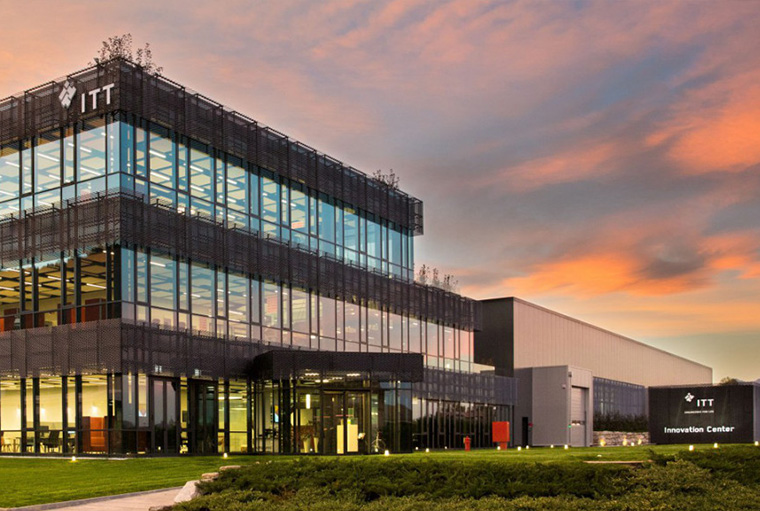 We are proud to work with ITT to extend our scope and drive further innovation in the additive manufacturing industry. ITT Inc. becomes part of the shareholder structure of CRP Technology and CRP USA, in line with its business plan for growth aimed at strategically investing and expanding in new technologies. "This transaction will allow us to implement a very ambitious business plan, focused on growth both in the markets in which we are already present, and in new markets with relative geographical expansion", said Franco Cevolini, CEO of CRP Technology. “We are proud that ITT chose us to enter the Additive Manufacturing industry: They consider us the right partner up to the expectations and projects they want to implement into the AM world, whose we at CRP Technology are undisputed leaders for almost 30 years". The investment complements ITT and serves the space, aerospace, defence, premium automotive and motorsports markets. It also enables ITT access to additive manufacturing excellence as the industry and number of applications continue to grow. "CRP is a smart investment for ITT. With almost three decades of leadership and innovation in additive manufacturing, CRP enables ITT to expand its position in material science and gain hands-on experience with additive manufacturing as the industries we serve continue to transform," said Luca Savi, CEO and President of ITT. "We are proud to partner with CRP as they continue to grow and deliver industry-changing innovations. Together, ITT and CRP can bring to market new products that deliver sustainable, lightweight, durable solutions for our customers." 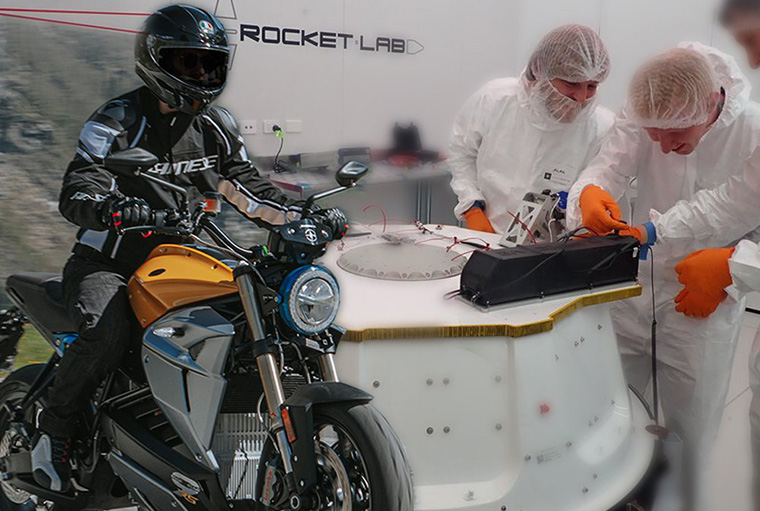 Pioneer in additive manufacturing, CRP invented the Windform family of high-performance materials for 3D printing of complex and customized designs for the aerospace, defense, premium automotive and motorsports industries. New WebsitesThe implementation of CRP companies' business plan has already started with the creation of brand new websites. For companies that offer advanced technology, it is essential to be present online with clear and comprehensive content, offering users the opportunity to request information on specific and customized solutions. The restyling involves all the websites of the CRP companies dealing with additive manufacturing industry: CRP Technology, CRP USA, CRP GULF as well as the Windform composite website. 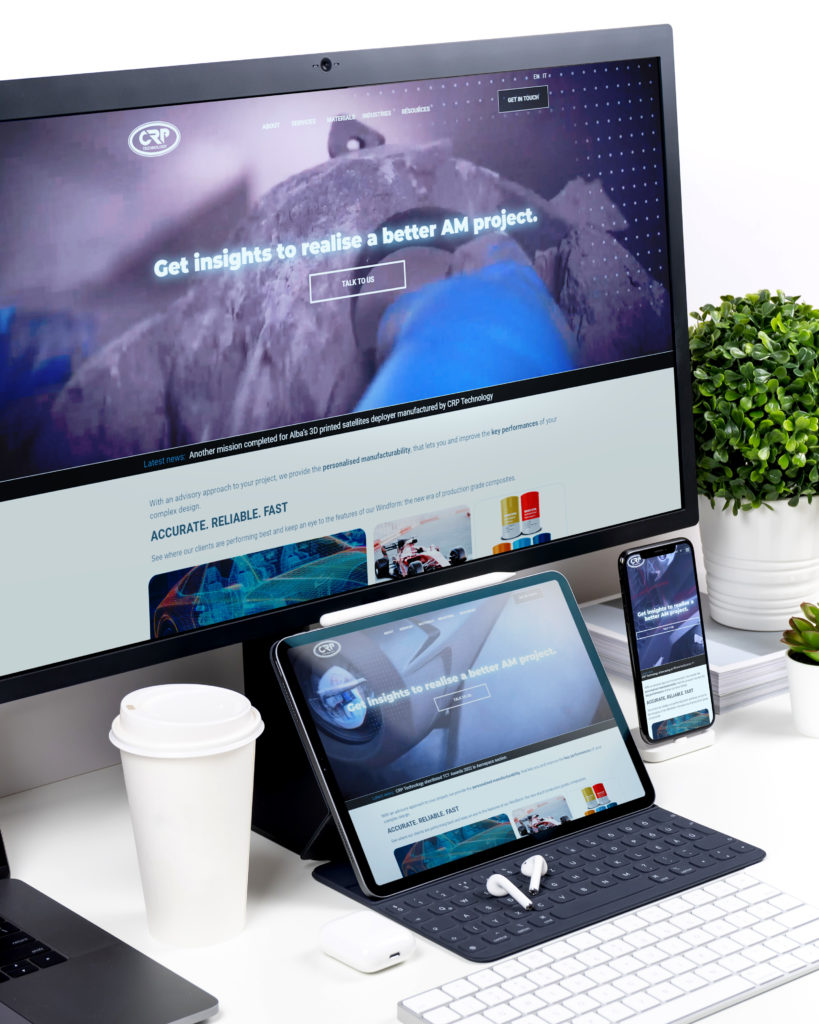 CRP group has launched new company and Windform web sites including a comprehensive, combined product portfolio tailored to make the product information easy to find. Revisal involved both the design and the structure, in order to make the communication of the 3D printing services offered by CRP firms, more immediate and effective, but also user friendly. "We want to make the new sites a valuable contact and information tool for all customers and for those who approach CRP companies for the first time. On each page you will find the necessary elements to contact us, satisfy your knowledge, and orient your requests." Added Franco Cevolini. As for the Windform website, very relevant is the new section "Choose your Windform" where the users can easily find – through filters – the most suitable Windform composite for their manufacturing needs Next destination: Formnext 2022CRP Technology is planning to exhibit at Formnext 2022. "It will be the first exhibition in recent years" commented Franco Cevolini "We can't forward to being there and receiving customers and attendees to our booth, where all the CRP firms will be present with the latest, innovative, functional parts and applications realized in Windform composites. See you there in November!" For more information: The post CRP Technology and CRP USA Capabilities Reach New Heights with ITT Investment appeared first on 3DPrint.com | The Voice of 3D Printing / Additive Manufacturing. |
| You are subscribed to email updates from 3DPrint.com | The Voice of 3D Printing / Additive Manufacturing. To stop receiving these emails, you may unsubscribe now. | Email delivery powered by Google |
| Google, 1600 Amphitheatre Parkway, Mountain View, CA 94043, United States | |
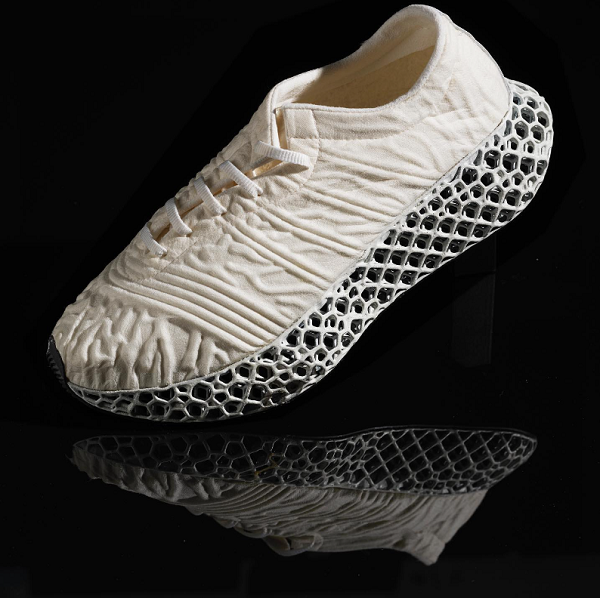
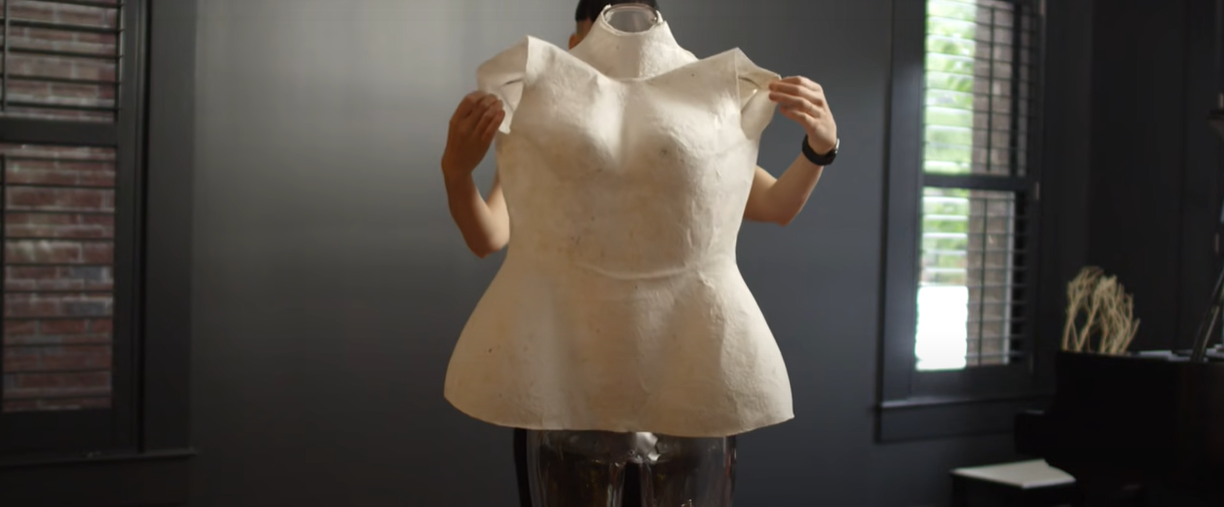
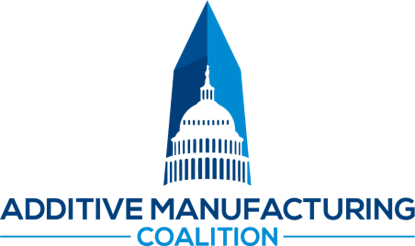
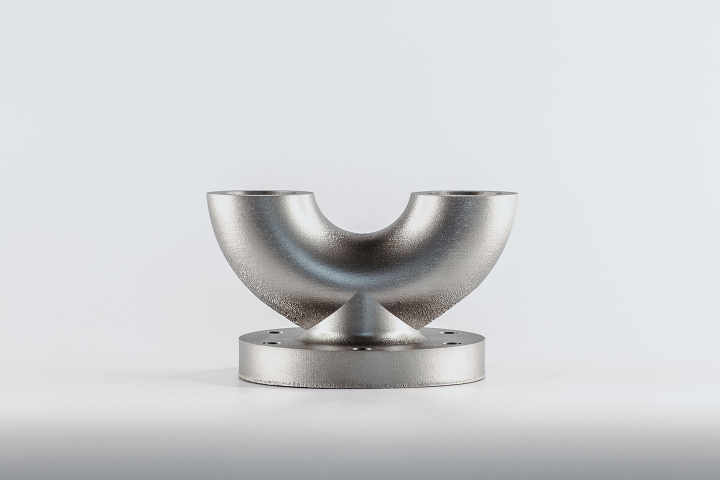
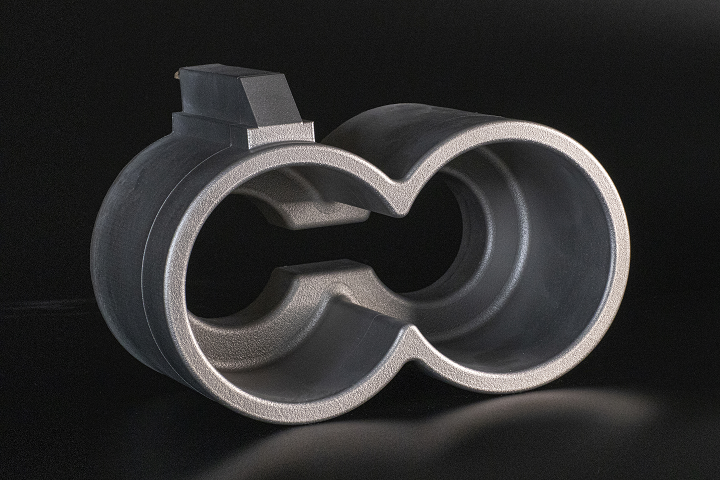
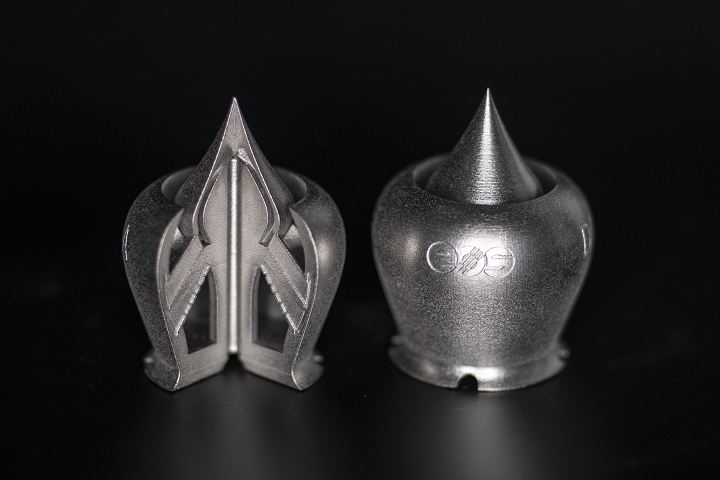
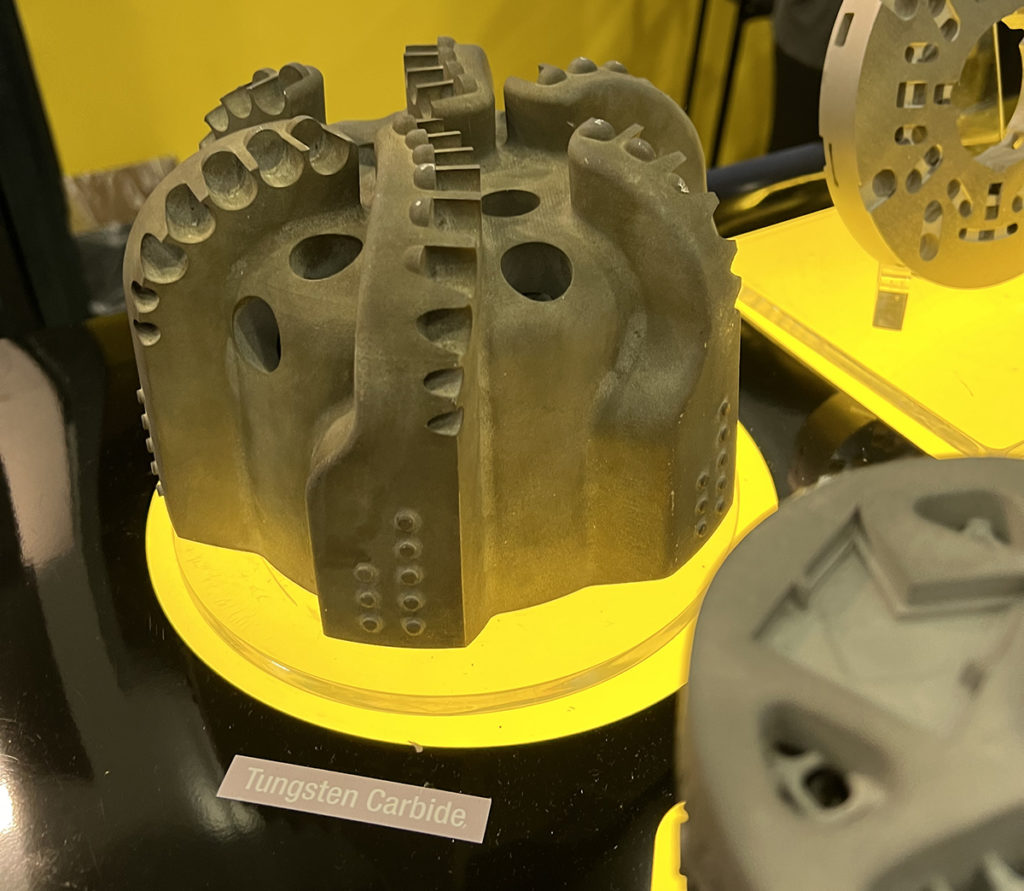
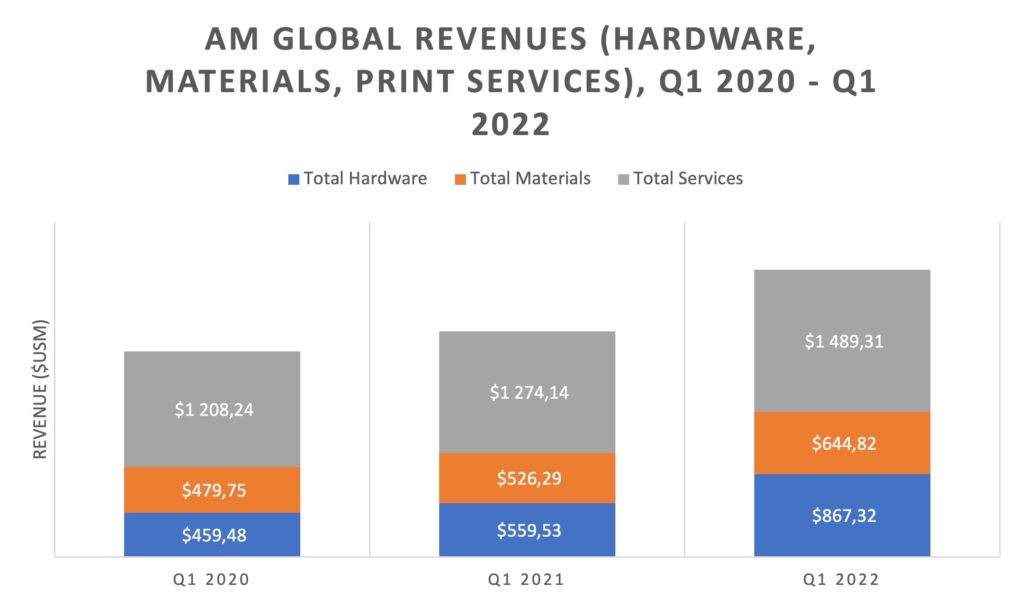



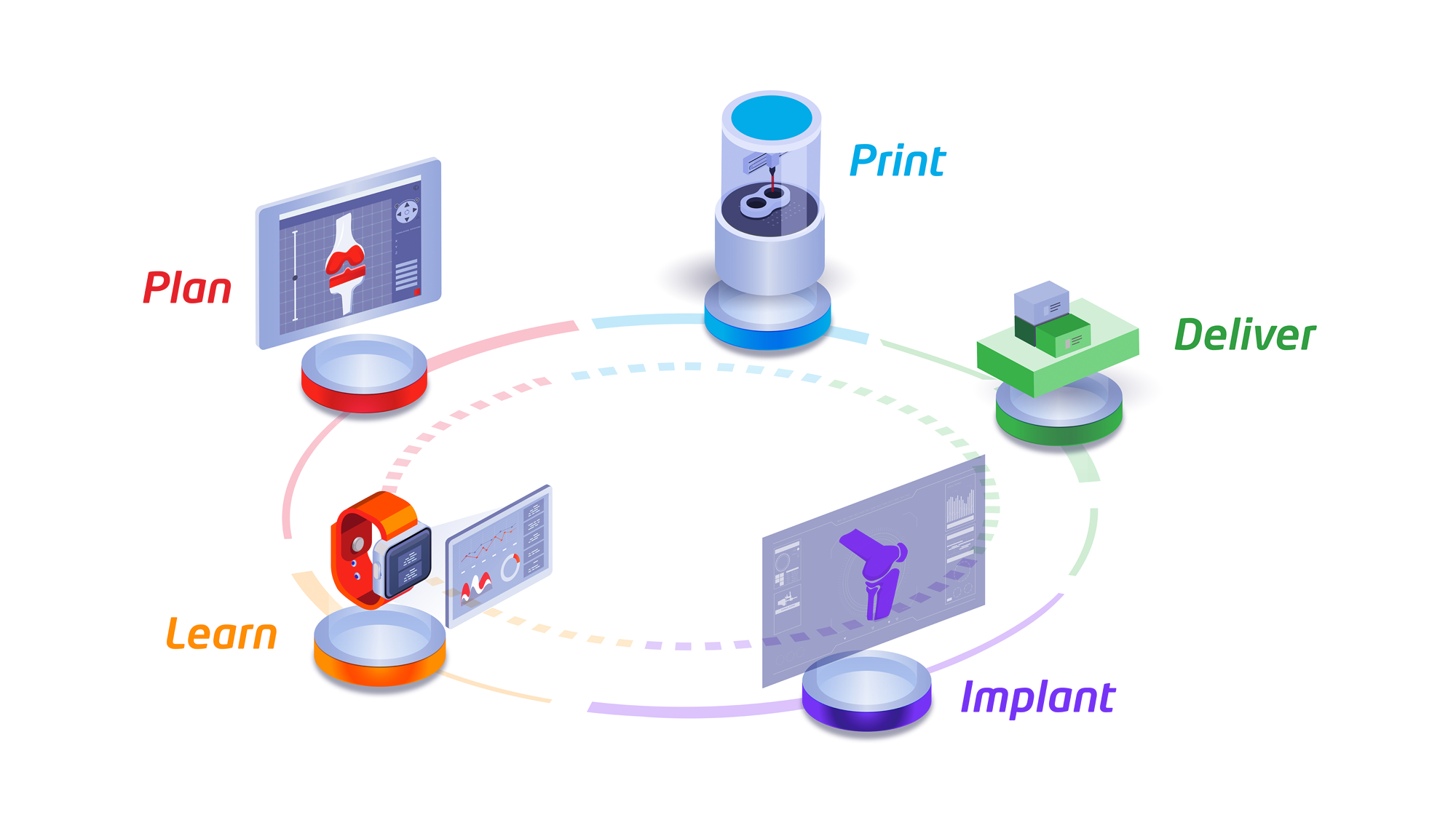


0 comments:
Post a Comment